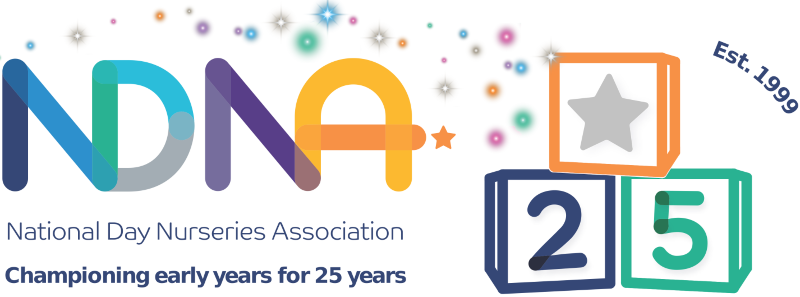
Food allergies at nursery
With almost 1 in 12 children in the UK suffering from a food allergy, how can you be sure you are doing everything you can to accommodate food allergies at nursery?
What is the best way to care for children with food allergies at nursery? How can you manage the juggling act of multiple allergies and what are the important steps you can take to minimise the risk of children in your care having a reaction?
What are food allergies and food intolerance?
It’s important that you and your team understand there’s a difference between a food allergy and an intolerance.
Food allergies can cause life-threatening anaphylactic reactions.
A child’s reaction to eating a food they are intolerant to could be uncomfortable and unpleasant but is unlikely to cause lasting harm.
How do food allergies develop?
A child’s risk of developing an allergy is increased if they have eczema or have a family history of allergies.
The worse the child’s eczema is and the earlier it developed, the more likely they are to have an allergy.
Many allergies develop when a child is between one and two years old, so as an early years practitioner, you can play a crucial role in helping a family identify whether their child may have an allergy that would need investigation by a doctor. However, some children are diagnosed much later.
Two types of allergies
There are two types of allergy – those generating an immediate reaction and others that can create a delayed reaction, making it even trickier to know if it’s really an allergy and to find out what the allergen is.
It’s important practitioners are vigilant about these symptoms as children at your nursery may not yet have a diagnosis but could be starting to exhibit the symptoms of an allergy.
All children are different, but there are some common food allergy symptoms to look out for.
Common food allergies
According to the NHS, the most common food allergies in children are:
Milk, eggs, peanuts, tree nuts (walnuts, hazelnuts, almonds, cashews) fish and shellfish.
Most children will grow out of milk and egg allergies, but only 10-20% will grow out of a peanut allergy.
Treating food allergies
Children with a diagnosed allergy will have their own medication and treatment plan, which all staff – not just their key worker – should be aware of.
Depending on a child’s treatment plan, staff may need training to ensure they can administer medication effectively, and confidently e.g. Epi-pen training.
You should also regularly review the child’s treatment plan with parents/carers and any relevant medical staff (if required) to ensure staff can continue to effectively care for the child if they have an allergic reaction.
For all allergies prevention is the best cure, so avoiding the allergen is always going to be the most important thing. But in the unfortunate event of an allergic reaction, an anti-histamine is likely to be the first step.
In the case of a severe allergy, an Epi-pen is also likely to be prescribed. Allergic reactions can also prompt asthma attacks, which will also need treating in line with the child’s
care plan.
If a child does not have a diagnosed allergy but you think they are having an allergic reaction, call 999.
If a child has a delayed reaction they could have different symptoms such as eczema, poor growth, reflux, swelling in the bowel, constipation and/or diarrhoea, raising knees to chest with tummy pain and frequent distress or crying.
Of course, we all know that one of the difficult things about caring for young children is that they can’t tell you what’s wrong.
Not only can they not communicate effectively with you, but they may not have the awareness to understand what’s happening.
Making sure all of your team have an awareness of allergy symptoms is really important.
Symptoms of an immediate allergy include
- A flushed face, hives, a red and itchy rash around the mouth tongue or eyes which can spread over the whole body
- Mild swelling, especially of the lips, eyes and face
- A blocked or runny nose, watering eyes and sneezing
- Nausea and vomiting, tummy cramps and diarrhoea
- A scratchy mouth or throat
Symptoms of a severe (anaphylactic) allergic reaction include:
- Wheezing or chest tightness, similar to the symptoms of an asthma attack
- Swelling of the tongue or throat causing difficulties breathing
- The shock caused by a sudden drop in blood pressure
- Dizziness, confusion, collapse, loss of consciousness, and sometimes coma.
Food in nurseries
Since 2014, nurseries providing food and snacks have had obligations under the EU Food Information for Consumers Regulations.
This means you have to provide accurate information about food and snacks which contain any of 14 allergen ingredients.
You need to make parents aware of the allergens in the food you produce and the snacks you offer, including pre-packed snacks. This can be by putting it on the menu board, sending home menus or any way you choose.
There’s lots of information on the Food Standards Agency’s website to help you understand what you need to do.
Many nurseries choose to have a “no nuts” policy across the setting to help reduce the risk to children, especially as some children don’t develop allergies until they are older.
Karli Booth of Toddle In Private Nursery in Colne, Lancashire says: “We have a no nuts policy across the board as we just think it’s the safest way. With an egg or milk allergy, it’s fairly easy to exclude these things from a child’s diet, but nuts just get everywhere.
“We go as far as to make sure all of our trips are nut-free too, so a trip involving food would need to not have nuts included or we wouldn’t go.”
Millie’s Mark
Millie’s Mark is a special endorsement for early years settings that go above and beyond when it comes to paediatric first aid training.
More than 1000 nurseries now hold the accreditation.
To gain accreditation nurseries must:
- Provide evidence through a full setting audit that they are doing everything practicable to keep children safe
- Demonstrate they are deploying their most confident staff effectively
- Prove all staff hold an appropriate current Paediatric First Aid Certificate Certificate (full or emergency). The process takes three to six months and includes tools such as a comprehensive audit, staff confidence audit and training matrix.
Visit the Millie’s Mark website
Support for managing food allergies at nursery
NDNA’s Food Safety and Hygiene – level 2 online course will give nursery practitioners the knowledge to safely and confidently prepare and serve food in their setting. It meets the requirements of UK Law and the individual curriculum requirements of England, Scotland and Wales.
This Food Hygiene course by NDNA has RoSPA (Royal Society for the Prevention of Accidents) Course Assurance.
Access this course from as little as £9 per course as an NDNA member.
Find out more about Food Safety and Hygiene – level 2
- food allergy
- nursery
Similar Articles
The UNCRC (Incorporation) (Scotland) Act 2024 – What does it mean for nurseries?

Safe sleep in nurseries

